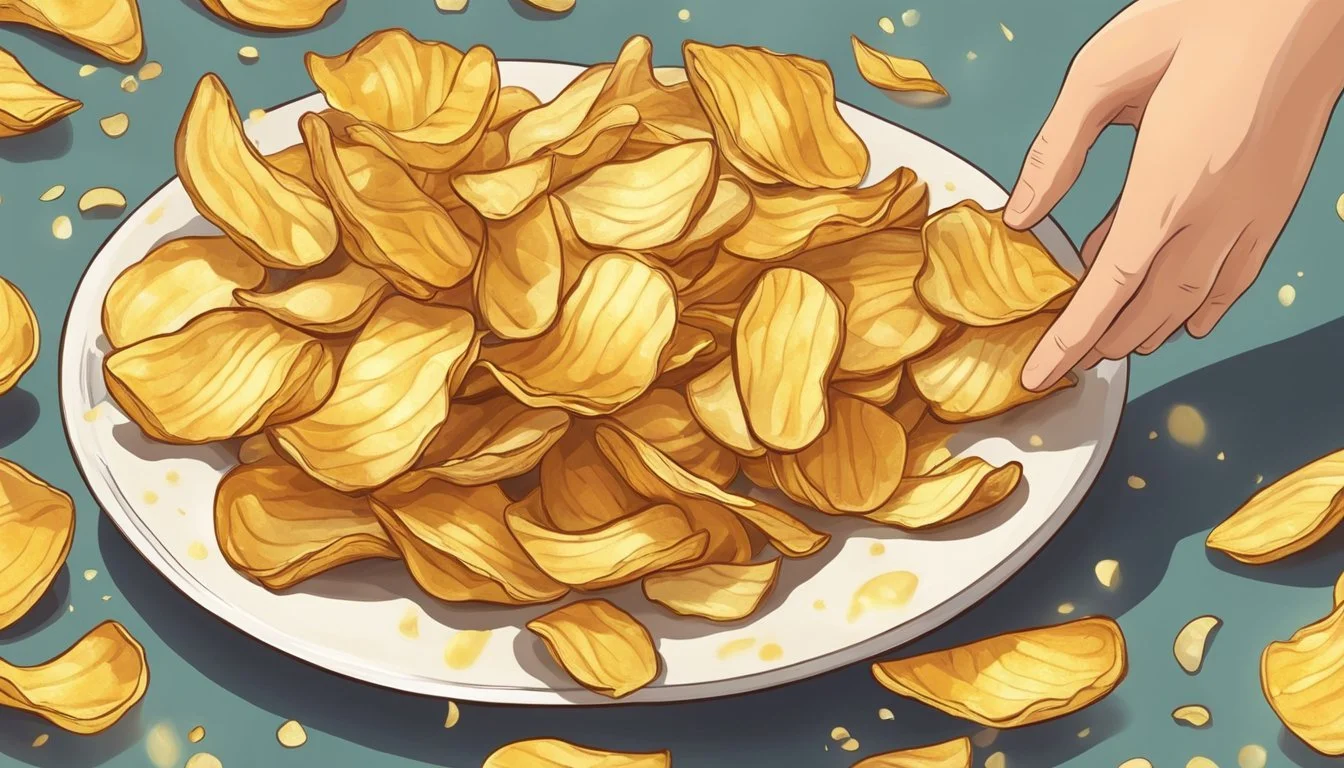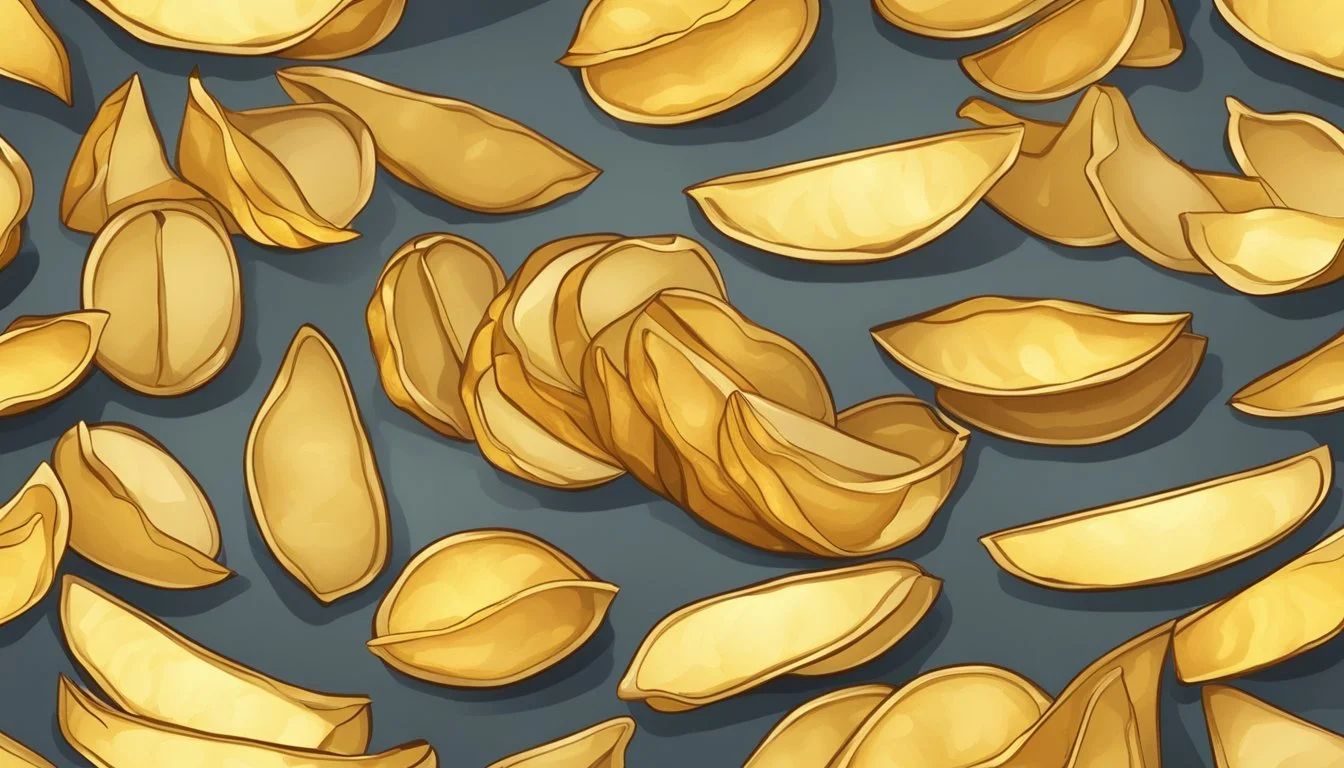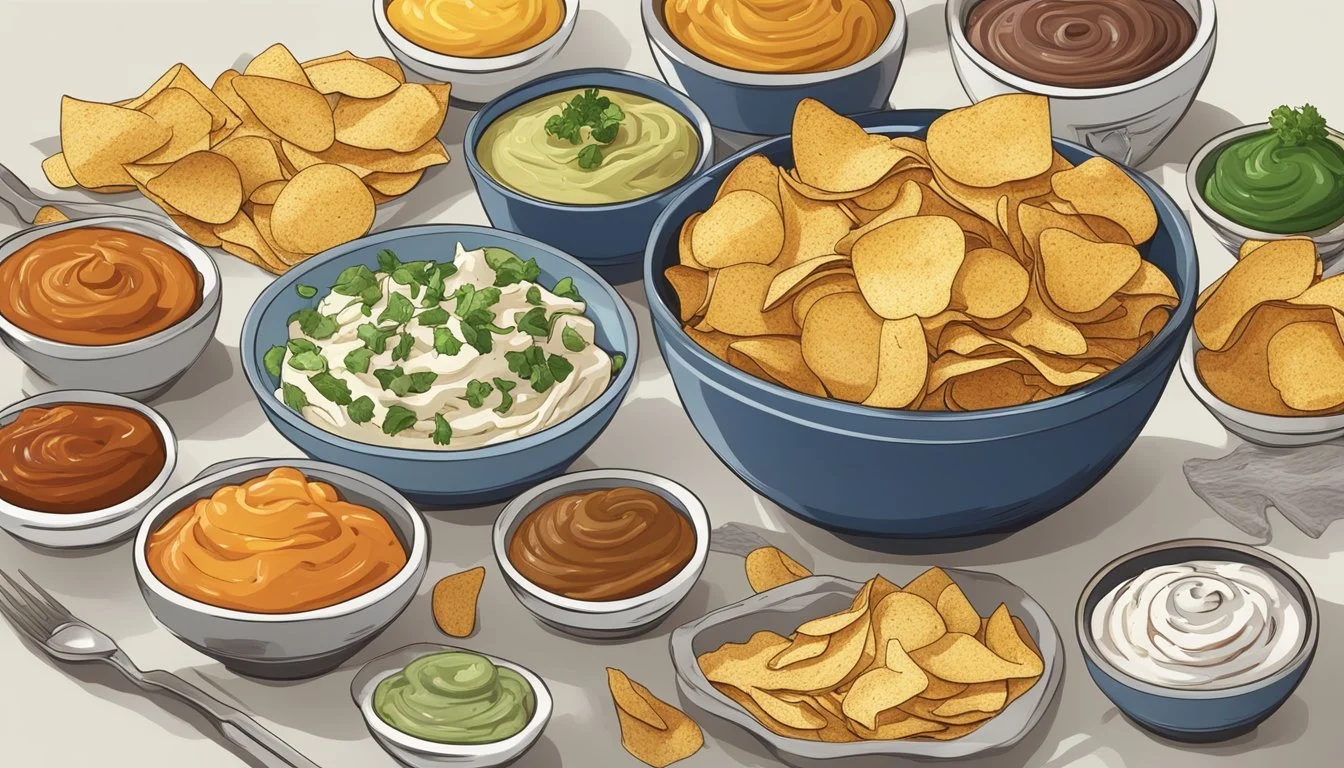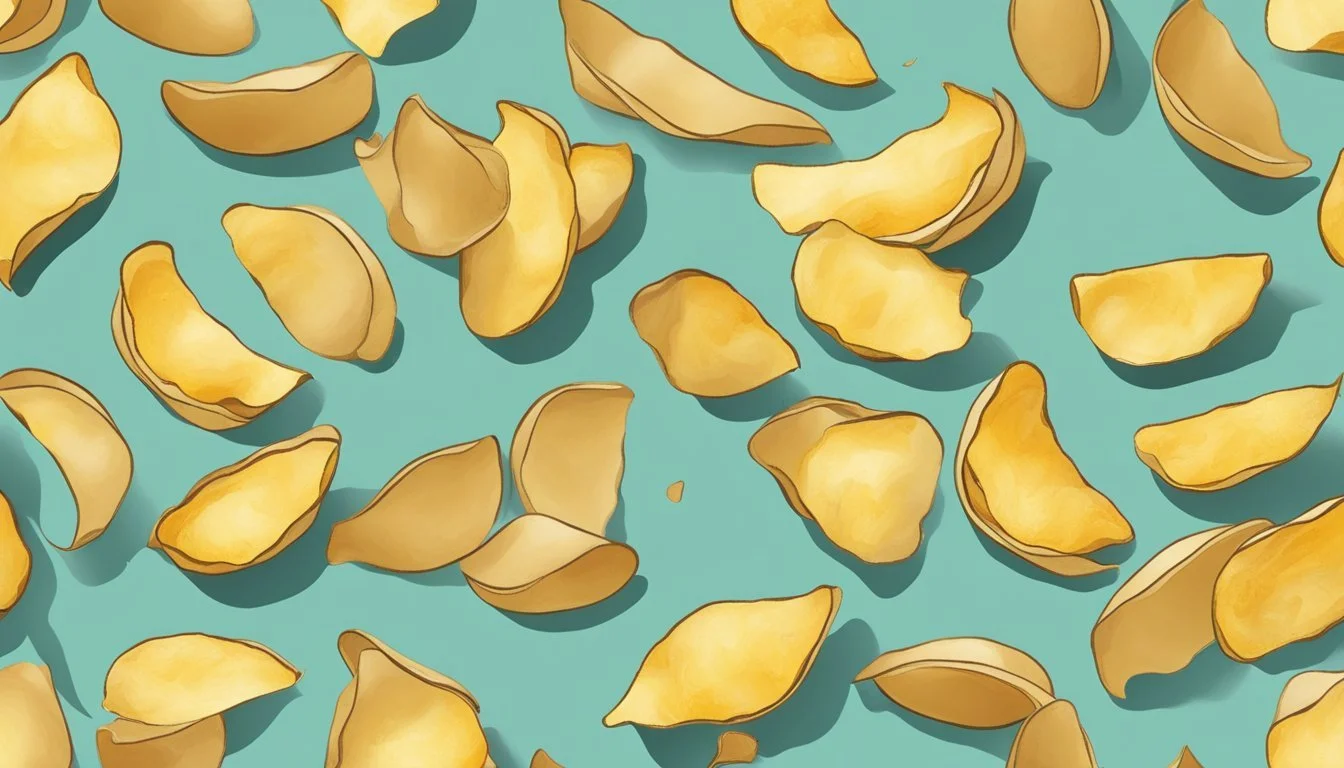Potato Peel Chips
A Crunchy, Waste-Free Snack Revolution
Potato peel chips are a prime example of a sustainable snack option that promotes a waste-free lifestyle. In a world where food wastage is a growing concern, these crisps serve as a delicious reminder that every part of food can be utilized. Made from the often-discarded skins of potatoes, (What wine goes well with potatoes?) these chips not only reduce waste but also offer a crunch that rivals traditional potato chips. This eco-friendly alternative highlights a shift towards more conscientious consumption, encouraging snackers to reconsider what they throw away.
These crunchy treats are not only a boon for the environment but also pack a punch in terms of flavor and nutrition. Potato skins are rich in fiber, vitamins, and minerals and when baked to a perfect crispness, they provide a guilt-free, delectable snack. The simplicity of the recipe, which typically involves just olive oil and a pinch of salt, contributes to the appeal of potato peel chips. The process transforms the humble peel into an appetizing snack that's becoming increasingly popular among those seeking sustainable and health-conscious food choices.
Adopting eco-friendly practices doesn't require a compromise on taste or pleasure, and potato peel chips are a testament to that. As individuals become more environmentally aware, snacks (What wine goes well with snacks?) like potato peel chips are gaining favor. They represent a small but meaningful step towards a more sustainable diet, aligning the love of snacking with the ethics of waste reduction. The increasing prevalence of recipes and discussions about potato peel chips signals a growing recognition of the importance of minimizing food waste while still enjoying tasty, nutritious snacks.
The Rise of Zero Waste Cooking
As global awareness of sustainability grows, zero waste cooking has gained momentum as a practical approach to reducing food waste and promoting a healthy environment. This method invites consumers to rethink food scraps, turning what was once tossed aside into fresh culinary opportunities.
Understanding Food Waste
Food waste refers not just to the obvious remnants of meals but also to the overlooked and frequently discarded parts of food, such as potato peels, carrot tops, and broccoli stems. Food scraps represent a significant portion of the waste stream, and they are often overlooked sources of nutrition and flavor. Zero waste cooking challenges individuals to repurpose these scraps, which might otherwise end up in landfills, contributing to methane production—a potent greenhouse gas.
Composting: For those scraps that cannot be cooked or consumed, composting provides a way to recycle back into the soil, returning valuable nutrients and reducing the need for chemical fertilizers.
Recycling: Although not all food waste can be composted, especially in urban settings, zero waste efforts include utilizing city recycling programs that accept food waste for industrial composting methods.
Benefits of a Zero Waste Kitchen
Adopting a zero waste kitchen practice entails numerous benefits that extend beyond personal nutrition:
Environmental Sustainability: Reducing food waste curtails the strain on landfill resources, decreases methane emissions, and can result in a lower carbon footprint.
Economic Savings: By utilizing every part of the food, consumers get the most out of their grocery spending, potentially decreasing their overall food bills.
Creative Cooking: Zero waste cooking sparks creativity in the kitchen, leading to new, innovative dishes and a deeper appreciation for the versatility of ingredients.
A zero waste kitchen contributes to a sustainable lifestyle while offering a practical solution to the issue of food waste. It leverages food scraps in ways that can transform meals and mindsets, shifting the focus from disposal to reuse and recycling.
Nutritional Benefits of Potato Peels
Potato peels, often discarded as waste, are a powerhouse of nutrients, offering a range of health benefits from their rich vitamin and mineral content to their high levels of antioxidants and dietary fiber.
Vitamins and Minerals
Potato peels are a valuable source of several essential vitamins and minerals. They are particularly high in:
Iron: Crucial for blood production and oxygen transport in the body.
Magnesium: Supports muscle and nerve function, blood glucose control, and protein synthesis.
Calcium: Vital for bone health and maintaining proper heart, muscle, and nerve functions.
Potassium: Necessary for cardiovascular health and maintaining proper fluid balance.
A table summarizing the mineral content in potato peels:
Mineral Benefit Iron Aids in hemoglobin formation and oxygen transport Magnesium Essential for biochemical reactions and muscle health Calcium Important for bone strength and signalling pathways Potassium Regulates fluid balance and supports heart function
Antioxidants and Fiber
The skin of potatoes is particularly rich in dietary fiber and antioxidants, which offer several health benefits:
Dietary Fiber:
Promotes digestive health by preventing constipation and reducing the risk of gastrointestinal disorders.
Aids in weight management by enhancing the feeling of fullness.
Antioxidants:
Compounds such as flavonoids, phenolic acids, and anthocyanins in potato peels can help protect the body against oxidative stress.
They may reduce the risk of chronic diseases, including heart disease and certain cancers.
To add:
Antioxidants: Compounds that help defend the body against oxidative stress.
Dietary Fiber: Essential for digestive health and maintaining a feeling of fullness.
Sourcing and Selecting Potatoes
When making Potato Peel Chips, the quality and type of the potatoes one uses are critical. The choice between organic and conventional potatoes also impacts the flavor and eco-friendliness of the final product.
Choosing the Right Potatoes
For the most flavorful and crispy Potato Peel Chips, one should seek out potatoes with thick, hearty skins. Russet potatoes are often recommended for their sturdy peels that crisp up excellently in the oven or air fryer. Here's what to look for:
Texture: Select potatoes with firm, unblemished skins.
Color: The skin should have a consistent, natural color typical to the potato variety.
Size: Consistent size among potatoes can ensure even cooking and chip size.
Organic vs Conventional
Organic Potatoes: Organic potatoes are grown without synthetic pesticides or fertilizers. They tend to have a more robust natural flavor and can be a healthier option for consumers.
Pros:
Lower pesticide residues.
Often more environmentally friendly farming practices.
Cons:
Can be more expensive.
May have a shorter shelf life due to the lack of preservatives.
Conventional Potatoes: Conventional potatoes are more widely available and usually less costly. The use of chemical aids in their cultivation could potentially affect flavor and health.
Pros:
More cost-effective.
Longer shelf life.
Cons:
Higher possibility of pesticide residue.
Potentially less environmentally sustainable farming methods.
When purchasing potatoes for peel chips, one should thoroughly inspect the integrity of the peels, preferring intact and clean skins, which are indicative of quality produce. Whether one opts for organic or conventional potatoes, the key is to ensure they are fresh and free of blemishes for the best-tasting potato chips made from peels.
Preparing Potato Peel Chips
Crafting the perfect Potato Peel Chips involves careful washing and seasoning. This section will guide readers through proper peel preparation for optimal baking results and explore a variety of flavors through different seasoning combinations.
Washing and Preparing Peels
Before turning potato peels into a delicious snack, it's crucial to properly wash and prepare them. Prep begins with thoroughly scrubbing the potatoes to remove any dirt. After scrubbing, drying the potatoes is just as important to ensure the oil and seasoning stick to the peels.
Scrub potatoes under running water with a clean brush.
Pat the peels dry with a towel or leave them to air dry.
Using a peeler or knife, remove thin strips of peel, avoiding too much flesh.
Seasoning Combinations
Once the peels are ready, the next step is to toss them in oil and seasonings before baking. Olive oil is preferred for its health benefits and ability to crisp the peels. Classic seasoning like salt and pepper can be enhanced with additional flavors such as garlic powder and paprika. Here's a table of seasoning combinations:
Base seasoning Additional options Salt Garlic Powder Pepper Paprika Your choice of herbs
A seasoned peel should be:
Evenly coated: Ensuring each peel is lightly coated with olive oil and seasoning mixture for uniform flavor.
Not overly seasoned: An excessive amount of seasoning can overwhelm the natural potato flavor and lead to burning during baking.
By following these preparation steps, one can create a batch of crispy, savory Potato Peel Chips that elevate a would-be waste product to a tasty, eco-friendly treat.
Cooking Techniques
When preparing potato peel chips, the cooking method impacts texture and flavor. One can bake or roast the peels, or explore alternative methods such as air frying to achieve desired crispness.
Baking Versus Roasting
Baking typically involves cooking the potato peels in an oven at a steady temperature, which allows them to dry out and become crisp. The cook should preheat the oven usually to a temperature of around 400 degrees Fahrenheit. They will need to line a large baking sheet with parchment paper or a silicone mat to prevent sticking. The peels are tossed in oil and seasoning before they are spread in a single layer on the baking sheet to ensure even cooking.
Roasting the potato peels, on the other hand, may involve a higher oven temperature which can range around 425 degrees Fahrenheit. The higher temperature can create a faster browning effect and potentially a crunchier texture. It's important the peels are laid out in a single layer on the baking sheet to ensure they roast evenly without steaming.
Alternative Methods
Aside from traditional oven baking and roasting, potato peels can also be cooked using:
Air fryer: A popular alternative method that uses rapid air circulation to achieve a crispy texture with less oil. The cook would preheat the air fryer to 400 degrees Fahrenheit, toss the peels with oil and seasonings in a bowl, and then cook them for about 10 minutes, shaking the basket intermittently.
Microwave: For those looking for a quicker method, microwaving the seasoned peels between layers of paper towels might be a viable option, although the results may vary widely depending on the microwave and won't typically be as crisp as oven-baking or air frying.
Creative Flavor Enhancements
Potato peel chips offer a versatile canvas for an array of flavorings—transforming simple skins into gourmet treats. By choosing the right spices and ingredients, chefs can elevate the taste of these crunchy snacks to suit any palate or occasion.
Sweet Flavor Variations
For those with a penchant for sweet treats, cinnamon and sugar can be sprinkled on the potato peels before baking to create a dessert-like snack. To add complexity and a hint of warmth, a drizzle of honey can balance the cinnamon's spiciness, while a touch of vanilla extract infuses a subtle aromatic sweetness.
Cinnamon Sugar: Mix equal parts of cinnamon and sugar and lightly dust the peels before baking.
Honey Glaze: Lightly drizzle honey over the peels post-baking for a glossy, sweet coat.
Vanilla Flavoring: A dash of vanilla extract can be added to the oil used to coat the peels before cooking.
Savory Twists
Savory flavors bring out the earthy profile of potato peels, and ingredients like cheese, garlic, and nutritional yeast offer a perfect match. Garlic adds a pungent kick that complements the crispy texture, while cheese provides
Pairing with Dips and Toppings
When exploring the flavor potential of potato peel chips, the right dips and innovative toppings are essential. They enhance the chip's natural earthiness and provide a contrast in texture and taste.
Best Dips for Potato Peel Chips
Hummus: Homemade or store-bought, hummus is a creamy pairing for the chips' crispness, adding a rich, savory flavor.
Sour Cream-Based Dips: A dip combining sour cream with spices such as garlic powder and chives can add a tangy and refreshing dimension.
Mustard: For a sharp and vinegary kick, a spicy or Dijon mustard dip complements the starchy peels.
Innovative Toppings
Jams and Sweet Spreads: The slight sweetness of fruit jams can contrast pleasantly with the salty chips. Fig or apricot jams work particularly well.
Salad Topping: Crumbled potato peel chips add a crunchy texture to salads, making for a practical and flavorful use of this snack.
Sustainable Snacking Beyond Peels
When it comes to eco-conscious eating, potato peel chips are just the beginning. The ability to turn scraps into culinary delights extends far beyond the humble spud, offering a myriad of options for those seeking to reduce food waste and enjoy sustainable snacks.
Utilizing Other Food Scraps
Apple Peels can be transformed into a sweet treat by baking them with a dusting of cinnamon and sugar, while Carrot Peels may be roasted with a touch of olive oil and salt for a savory crunch. Banana Peels are often overlooked but can be boiled to make a tender base for vegan pulled "pork" sandwiches.
Broth is a prime destination for miscellaneous veggie scraps. Collect ends and peels in a container in the freezer, and when enough is accumulated, simmer them in water with herbs to create a flavorful broth. Here's how to use specific scraps:
Apple Peels: Add to smoothies for fiber or steep in hot water for a homemade apple tea.
Carrot Peels: Save them for adding to vegetable soup or blend into smoothies for a nutrient boost.
Banana Peels: Use to infuse water or tenderize meats in braising.
Eco-Friendly Snack Ideas
Creative snackers can expand their zero-waste repertoire with these ideas:
Snack Type Description Smoothies Use fruit peels or pulp to add fiber and nutrients to morning or post-workout smoothies. Herb Cubes Freeze fresh herbs in olive oil or water in ice cube trays to toss into recipes as needed. Compostable Packs Seek snacks in compostable or recyclable packaging to minimize environmental impact.
When making Herb Cubes, ensure you finely chop or puree the herbs before freezing to release their full flavor. Whether for smoothies or snacks, each effort to repurpose food scraps is a step towards a more sustainable lifestyle.
Storage and Preservation
Proper storage and preservation of potato peel chips ensure that this zero waste snack retains its crispness and flavor. Both storage techniques and methods to extend shelf life are crucial for maintaining the quality of homemade chips.
Proper Storage Techniques
Immediate Storage: Once the potato peel chips have cooled down to room temperature, they should be stored in an airtight container to prevent moisture from softening them.
Avoiding Humidity: To ensure the chips stay crisp, one should store the airtight container in a dry place away from any sources of humidity or heat.
Extending Shelf Life
Sealing Options: Vacuum-sealed bags can greatly extend the shelf life of potato peel chips by removing air that can lead to oxidation and spoilage.
Use of Desiccants: Silica gel packets can be placed in the storage containers to absorb any excess moisture which might compromise the texture and quality of the chips.
By following these specific techniques, one can enjoy homemade potato peel chips as a crunchy, zero waste snack for a longer period.
Incorporating Potato Peel Chips into Meals
Potato peel chips, with their satisfying crunch, offer a resourceful way to enhance meals throughout the day. They provide a unique texture and flavor that can complement various dishes from morning to midday.
Breakfast Options
For breakfast, one can introduce potato peel chips as a crunchy contrast to the usual soft textures. Eggs and Peel Chips: A plate of scrambled or poached eggs can be garnished with a handful of crispy potato peel chips, adding a delightful crunch. Avocado Toast Twist: A sprinkle of these chips atop avocado toast not only adds texture but also an earthy potato flavor that pairs well with the creaminess of the avocado.
Lunch Recipes
Moving on to lunch, potato peel chips can be creatively integrated into a variety of dishes. Bold Salads: They can serve as a gluten-free crouton alternative in salads, giving a bite that stands out amidst greens and dressing. Hearty Soups: When it comes to soups, potato peel chips offer a more rustic and flavorsome garnish compared to the traditional bread or crackers; simply float them on top of your favorite soup just before serving to retain their crispness.
Community and Environmental Impact
Turning potato peels into chips not only presents a creative solution to food waste but also significantly benefits both local communities and the environment. This approach reduces landfill contributions and encourages sustainable living practices.
Local Initiatives
Local communities benefit from the adoption of practices that turn potential waste into a resource. By creating potato peel chips, families reduce household waste, and community initiatives often involve distributing these innovative snacks through local markets and events, fostering a sense of community. Local businesses can also capitalize on this by incorporating such eco-friendly practices, which may enhance their reputation and customer loyalty.
Workshops and education: Local organizations conduct workshops to teach the community about turning food waste into viable products.
Community gardens and kitchens: These spaces often use potato peels to create a cycle of use that ends with composting, returning nutrients to the soil.
Global Sustainability Efforts
On a global scale, converting potato peels into chips aligns with broader sustainability efforts to combat climate change by reducing greenhouse gas emissions from decomposing waste. Several states and countries have adopted policies promoting the reduction of food waste, which ties into international climate goals.
Reduction of greenhouse gases: When organic waste decomposes anaerobically in landfills, it emits methane, a potent greenhouse gas. Upcycling potato peels into snacks helps mitigate these emissions.
Advances in renewable energy: Some industries explore the possibility of using potato peel waste for biofuel production, further contributing to a circular economy.






